A major plus side to joining the group going to the clay lick was an extra 30 minutes of sleep--we didn't have to be at the dining hall till 5am. Not that sleep actually was all that easy. The beds were uncomfortable, and we just so happened to be here on the tail end of a Friaje so the temperatures dipped significantly at night. The single sheet and thin "comforter" wasn't enough to stop the chill of the night. Towards 3am or so a pair of CRESTED OWL started piping up and called from time to time for a bit. We had alarms set, and someone was supposed to wake us at 4:30am as a backup. Just after 4 though the couple next to us started making racket when they woke. Several times they dropped things on the floor waking us from the light sleep we were getting. After a while of dozing in and out I thought it seemed like a lot of time had passed so I reached for my watch which showed the time being 4:50am. Shit--we missed our alarms and no one woke us up. I hurried out of bed and woke Sam and we rushed to get our gear ready to go. We were going to miss the boat to the lick if we weren't ready in time, and somehow our luck on this stretch of the trip seemed to be right back where it was 40 hours earlier.
We managed to make it out as the rest of the group was gathering up after breakfast--our guide joked about us missing breakfast but had grabbed us a couple juice boxes and crackers to snack on the boat. I wasn't really amused--and was cussing in my head, almost missing the singing TAWNY-BELLIED SCREECH OWL as we walked towards the boat. The little owl was trilling like a champ somewhere inside the forest. The tinamous were also making their usual racket--the UNDULATED TINAMOU was one of my favorite jungle noises. We made our way down the stairs to the boat--our new group had one person who to put it nicely, had no business being in the jungle. This lady was from Germany, and she was dressed more for an afternoon stroll where brightly colored walking shoes. Did she know where she was? She struggled through the rocks and mud on the shore, and we eventually passed her to make our way on board. She was the last tourist on and sent the boat rocking back and forth when she stumbled aboard--now I understood why they had those life jackets.
The first distant Chestnut-fronted Macaws of the morning
While looking at the macaws there appeared to be some toucanets moving around in the tree as well--with binoculars it was almost impossible to ID them, but the other group were looking at them in the scope. Of course they didn't offer anyone in our group to take a look--unlike when I guide I have on multiple occasions shared a scope look with others who happened to be nearby. Based on their pointing at the book (same guide I have), I gathered the birds were GOLDEN-COLLARED TOUCANETS, too bad they were too far away to get a decent look. The occasional flock of macaws, parrots, and parakeets flew over the colpa and off over the jungle. Our guide warned us that because of the cloud cover, the birds may avoid the lick all together today. Great news--the trip to the jungle may end up a complete wash...
Yellow-crowned Parrots visiting the Colpa
Then the dam broke. The next visitors were a raucous flock of about 20 DUSKY-HEADED PARAKEETS that came in clinging to the wall and the branches above. These tiny parakeets reminded me of my Senegal Parrot superficially. They were by far the most abundant species that came in to the wall and even when other birds scattered from time to time, they were the least flighty staying till all the birds flew off later. Within a minute or two and a few BLUE-HEADED PARROTS joined the fray.
Blue-headed Parrot and Dusky-headed Parakeets
After that parakeets several MEALY PARROTS came in, giving us 4 species at the wall at once. The mix of birds was awesome--and our guide told us how lucky were were having the three species at the wall and having seen the macaws across the river. He told us this was a great morning at the lick--he had no idea that it was about to get even better.
One of several Mealy Parrots at the clay lick
Out of nowhere a flock of CHESTNUT-FRONTED MACAWS came screaming into the trees. They made their way to the wall joining the mix and stirring things up among the other parrots.
4 Chestnut-fronted Macaws landing on the wall
As the group enjoyed the amazing viewing opportunity and the spectacle unfolding Sam asked me what the one with the pink head was. I knew she had to be talking about a WHITE-BELLIED PARROT and after explaining where it was I had it in my binoculars and then my camera. We told our guide who alerted the rest of the group--although I am not sure how many actually saw the bird, or cared--after all, none of them were birders.
The lone White-bellied Parrot that Sam spotted
I spent a few minutes just watching the odd ball until it disappeared. It would be the only one to visit the lick that morning, and the only of the trip. Thank goodness Sam has been birding with me enough to let me know when she sees something that seems out of place--like the parrot with the pink head amongst all the other green ones. While we let our focus turn back to the parrots another group of birds came in--this time however they weren't parrots, but a flock of VIOLACEOUS JAYS.
A Violaceous Jay preparing to fly
My lifer Orange-cheeked Parrots alongside several Chestnut-fronted Macaws
I just sort of blurted it out in awkward excitement. No one else in the blind really cared except for our guide who asked frantically where. I showed him and soon counted 5 of them in the trees just above the wall. The never actually came into the clay but stayed just at the edges. As I giddily watched, photographed, and told Sam how much I wanted to see these birds the others in the group probably thought I was a nut job--they were just parrots after all. They didn't understand and that was fine with me--the Orange-cheeked was #20 on my top 25 list for Peru. Besides the black head and orange cheek that stood out, this species had incredibly colored underwings making it a spectacular sight in flight.
An Orange-cheeked Parrot providing excellent looks
This was the Amazon I had expected--this was the kind of birding I imagined waited for me in Peru. Then in an instant the entire group flushed from the wall, looping to the north, and then back towards us out over the jungle with their screeches and squawks fading as they disappeared into the vast green expanse. We sat for another 15 minutes but no birds returned--typically when the birds leave the site for the day they are gone, even though some individuals may linger. It was an amazing experience, and the highlight of the entire trip up to that moment. Even Sam thought it was a very cool thing to watch all these wild parrots just feet from us. Our guide said this was the best day he had had at the lick in his time working at the Explorer's Inn. 7 species of parrots visiting this tiny clay lick was outstanding. The trip to the Amazon wasn't a complete wash!
The parrot flock leaving the lick all at once.
The group made their way out of the blind and headed into the jungle. We walked about 20 minutes to another clay lick that apparently used to be the place to look for parrots, but was now mostly used by mammals. There was no wildlife at that lick when we arrived, but a lone ORANGE-CHEEKED PARROT sat on a dead limb above. It wasn't as great as the looks we had from the blind, but was nice to see one last time. It wasn't even 8:00am and it seemed like the day could turn up some amazing things if it continued as it had started--or at least that's what we thought.
Me looking quite smug after a great morning at the Colpa
As a side note, up river from the Inn is a huge clay lick that you can visit if you plan a longer stay. You actually camp out along the river near the lick because the boat ride is too long to do in the morning to get there by first light. One of the reports I read about a 1/2 day visit to that lick was inspiring. Something like 96 species were heard and observed on one morning--obviously most of those weren't parrots, but it was simply amazing to me. Supposedly that lick is one of the most active on the river and you can expect around 10 species of parrots on a good day, including a number of macaw species. There are several world famous macaw licks in southern Amazonia--and if you ever go to Peru and are a birder visiting one is an absolute must--I know that if I go again, I will likely visit a much larger lick and spend a couple days to take the madness in!
10 life birds this morning / 144 total trip life birds / 189 total trip birds
Photos from the Explorer's Inn Clay Lick on TimAveryBirding.com
Labels: Peru, Travel, trip reports
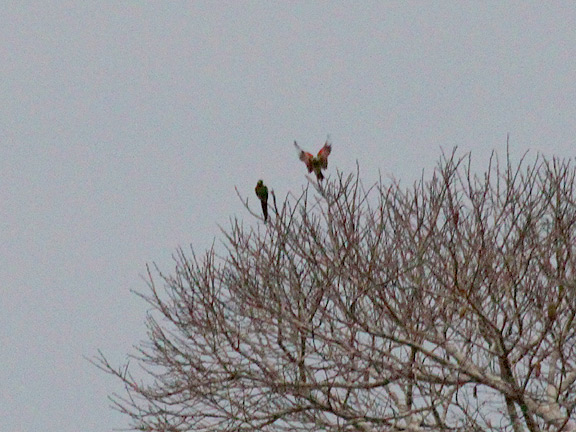
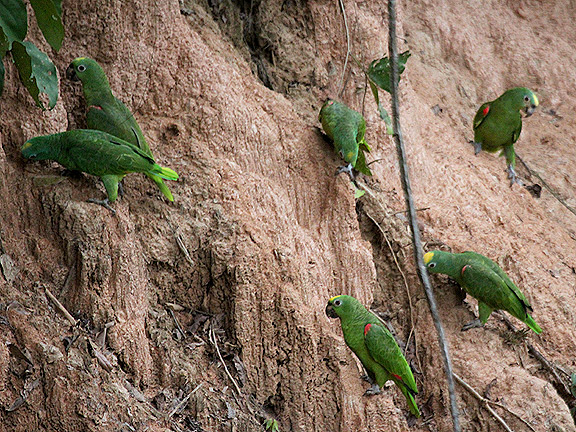

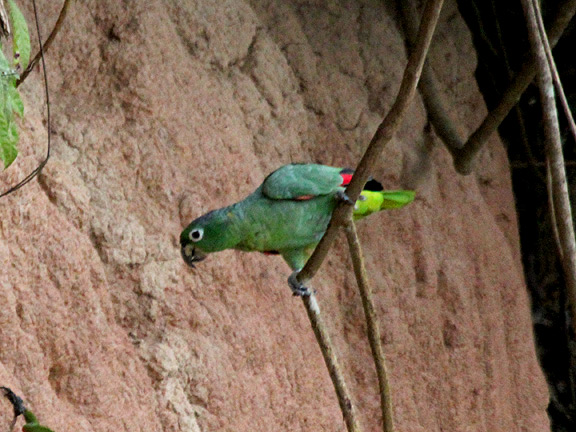
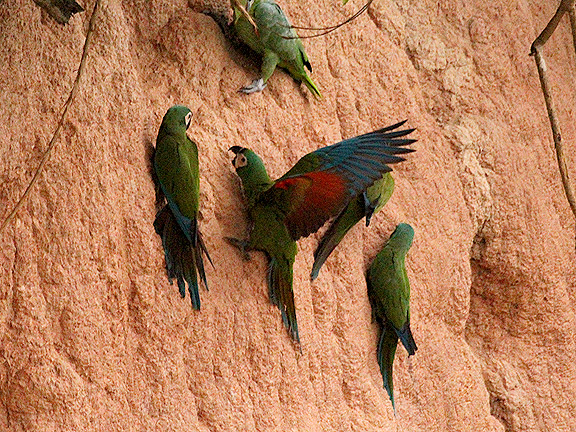
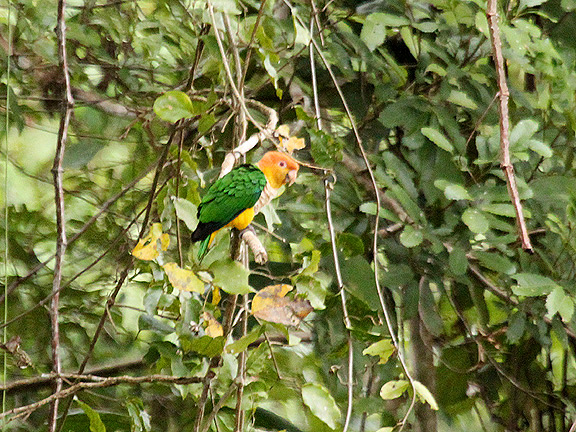
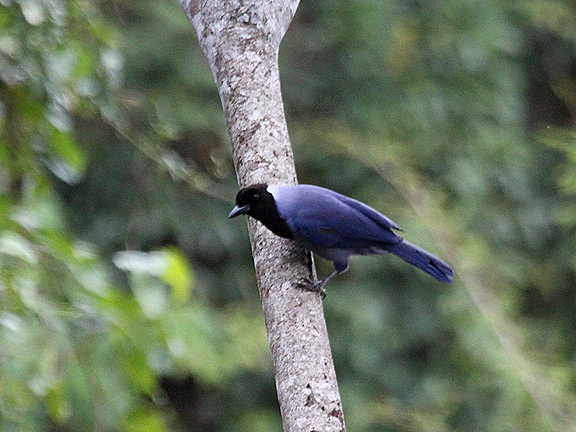
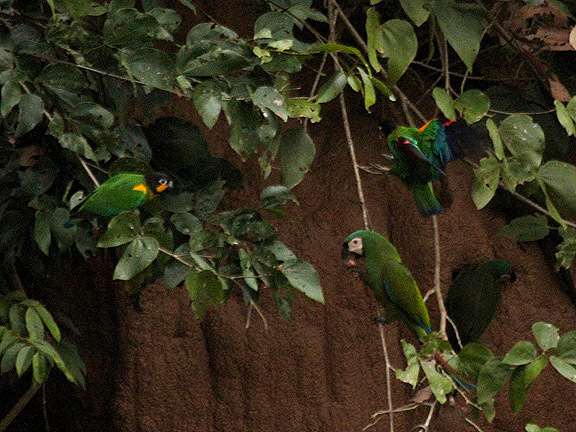
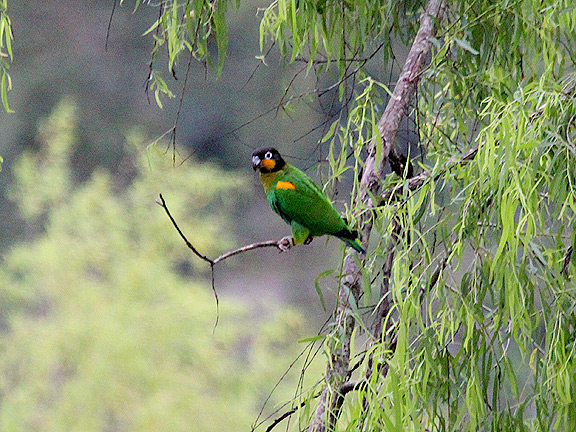
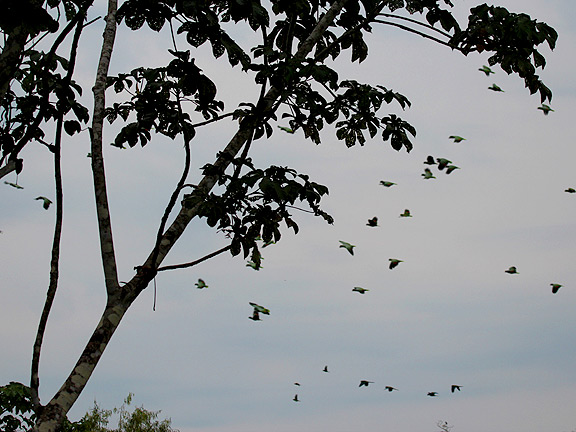
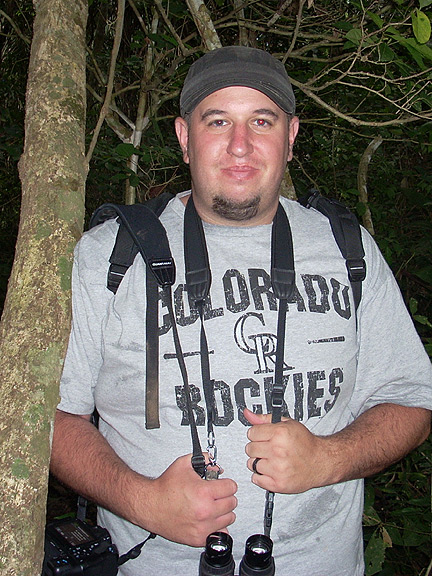

3 Comments:
Congratulations on the great day at the colpa.
Sounds like a beautiful day at that colpa. Great pictures, especially the jay and the Orange-cheeked Parrots! That might have been one of the colpas I used to survey. I had some great mornings there but I dont think I had as many species as you did. Spent a lot more time at the big clay lick where people camp out- truly spectacular and situated in a wilderness area. Folks who camped out were invariably "devoured" by no-see-ums though.
Who can blame you for looking "smug" after going to the colpa? (referencing the photo) The place is awesome!! Here are my recent adventures to the Amazon (including the clay lick) ... huge trees of the Tombopato Reserve and ... the macaw clay-lick on the Tombopato River of Peru hope it adds to discussion :)
Post a Comment
Subscribe to Post Comments [Atom]
<< Back to Previous